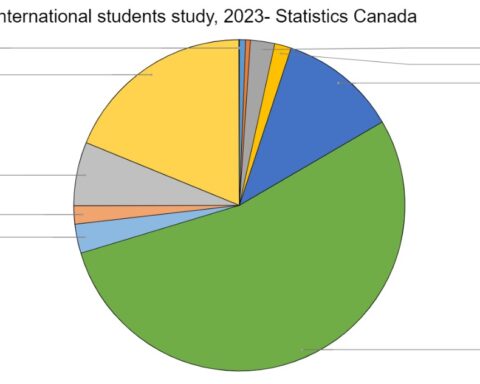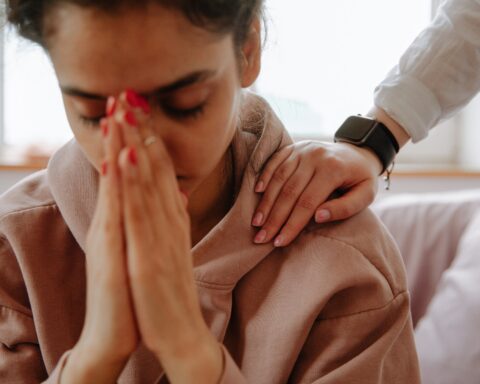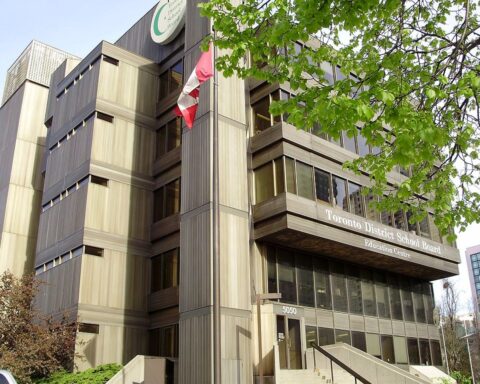Jeffrey Sze is a third-year student in the University of Toronto Scarborough and Centennial College’s joint journalism program. Batoul Hreiche is a fourth-year journalism student at Carleton University. Kaitlyn Smith is a second-year student in the University of Toronto Scarborough and Centennial College’s joint journalism program.
J-Source: Is your school diverse? This question applies to the student body and the faculty.
Hreiche: My j-school’s student body and faculty is not as diverse as one would hope. There are very few people who are culturally and ethnically different. I’d also like to point out that I’m double-majoring in law, and I see much more diversity in their student body, as well as their faculty, than I do in journalism.
Sze: I feel like my student body is composed of a diverse body of people from different countries and backgrounds. In terms of faculty, it’s not as diverse.
[J]ust because there is a multicultural environment in Canada doesn’t mean ignorance automatically vanishes. I’ve found that many Canadians are very closed minded, and I am astounded at the way people confuse tolerance for ignorance. – Kaitlyn Smith
Smith: I think a lot of the problems with diversity and its total lack of proportion in the journalism field and j-schools is the restrictive, suffocating model of education in Ontario. My first year at university I remember the pressure to conform, so much so that I didn’t think it was worth it to finish my degree.
But last semester I was taught by a biracial, female professor — Dr. Minelle Mahtani — who rejected the university’s original method of teaching (she literally saved my journalism career). She focused the classroom on thinking outside of the box. I think this is a great way to start approaching the ideas of diversity.
Additionally, just because there is a multicultural environment in Canada doesn’t mean ignorance automatically vanishes. I’ve found that many Canadians are very closed minded, and I am astounded at the way people confuse tolerance for ignorance.
Hreiche: I believe a lack of diversity exists because the journalism industry is primarily perceived as a “white” field. And people who may come from a misrepresented cultural or ethnic background tend to hold a negative view of the industry. So people generally do not want to engage in journalism.
J-Source: Batoul, why do you think the law program might be more diverse?
Hreiche: From my experience double-majoring, I believe the law industry is evolving quicker than journalism is. A lot of my friends who have completed law school told me that there is a diverse population in their field. And I’ve noticed that while searching for lawyers or legal experts to interview for certain articles.
Sometimes, I feel the opposite. I feel that looking different makes me stand out — in a good way. My experience as one of the two hijab-wearing students in the journalism program made me realize how being different was actually a powerful tool. – Batoul Hreiche
J-Source: If there is a lack of diversity in your school’s faculty, why do you think it exists?
Sze: For me, in terms of faculty, I feel like it isn’t as diverse because of the media landscape in the past. The professors here are people who have had experience in the industry. It’s a reflection of the media landscape in the past. I think that as we move forward, maybe in the next 15 years, we might see a change.
Breaking into the Industry as a ‘Diverse’ Face
J-Source: Have you faced any challenges because of this lack of diversity in the industry?
Hreiche: Sometimes, I feel the opposite. I feel that looking different makes me stand out — in a good way. My experience as one of the two hijab-wearing students in the journalism program made me realize how being different was actually a powerful tool.
I just completed a two-week internship with the CBC, and I was lucky enough to get three on-camera opportunities. I received so many heartwarming comments from people who are not used to seeing diversity on mainstream media, and not all the people who reached out to me were Muslim or Arab!
Sze: I don’t think I have faced challenges in this industry. I feel like the opportunities that I was able to get in journalism was not because of my background but rather my skill set.
J-Source: What do you think might be some ways to increase diversity moving forward?
Sze: I feel that having diversity in the field is definitely a great thing to have, but at the same time, I don’t feel that the nature of one person’s reporting should be based upon who they are. I feel like a journalist’s skill set should be looked upon more than their background, colour or gender.
J-Source: Do you think the onus is on individuals who are part of a marginalized group and identify as such to bring these issues to the forefront in their schools or in the workplace?
Hreiche: For starters, this idea needs to be implemented in the educational system, and not only in journalism programs. In the end, journalism serves every profession, so emphasis needs to be placed in all educational areas. Also, I believe another one of our key starting points is for media institutions to realize how a diverse newsroom would alter their coverage on certain topics — in a profoundly good way. They need to realize that diversity fosters new discussions in a newsroom.
Tackling the Diversity Issue
J-Source: As young journalists in the field, how do you see this lack of diversity manifesting in the quality of Canadian journalism?
Hreiche: I believe it’s a two-way solution. Firstly, the media’s power over public knowledge and education cannot be underestimated. So those that are already involved in the field need to shed some light. However, from my experiences thus far, I believe marginalized communities hold themselves back. They believe that since there aren’t many of them out there, they can’t make social change.
Judging based on the diversity that’s here at my school right now I feel like diversity will soon be reflected in Canadian journalism. – Jeffrey Sze
When I was accepted into the journalism program, those around me told me that I would not succeed because my background is Arab and Muslim, and I wear the hijab. When I started, I realized they’re right — there aren’t enough of us out here —but I came to the conclusion that if people hold themselves back from engaging and breaking misconceptions, then the world will never evolve. So it also starts with us.
Smith: I agree with Batoul, but we also need to address the back-pedalling of news media and media itself, as well as conservative backlash that many diverse news organizations, and the people they cater to, receive.
Pertaining to the question Aeman mentioned earlier, I see a lack of diversity and equal coverage in foreign reporting. There is a standard of foreign reporting that I have found creates villains out immigrants. We have very little interest in going straight to the source. This definitely takes away from really great stories and causes our audiences to focus on the wrong ones.
Sze: I think touching on the point I made earlier, we’re going to be seeing a change in this industry, where diversity would be reflected, and I guess this would be an optimistic assumption. Judging based on the diversity that’s here at my school right now I feel like diversity will soon be reflected in Canadian journalism.
Women in the news media still earn less than men for the same work. “Visible” minorities are still considered “quota filling” burdens. Just because we see more diverse cultures being addressed and hired as broadcasters, doesn’t mean it’s fixing the problem of diversity or lack of it in journalism. – Kaitlyn Smith
J-Source: How do you plan on tackling this issue of diversity in the media when you are actively engaged in the field? If you decide to, what are practical ways in which you would do so?
Sze: I don’t know about the term “tackling” the issue. But I think with the issue of diversity in media, I will try to be more aware with the stories I work on, the historical and social contexts that are behind the issue.
Smith: I just wanted to touch on Sze’s last point. Sorry for being so slow, but, Jeff, I may be a little more cynical than you. I don’t see the trend of a more diverse community in the future.
Perhaps it’s because I’m still listed at the university level of journalism, but from what I can see, unless we actively do something, I feel that we’re starting to fall back into the dark ages.
Women in the news media still earn less than men for the same work. “Visible” minorities are still considered “quota filling” burdens. Just because we see more diverse cultures being addressed and hired as broadcasters, doesn’t mean it’s fixing the problem of diversity or lack of it in journalism.
Hreiche: When I’m actively engaged in the field, I dream of facilitating the process of diversifying the newsroom. While a diverse newsroom will not be created overnight, the change must be active.
So, for starters, I’d like to report on Canada’s lack of diversity in the industry because I feel it doesn’t receive much attention. I’m positive society realizes this already, but with more attention, if there are people who are afraid or nervous to break out of their shell because they so happen to be from a different cultural, ethnic, or religious background, a further spotlight on the issue may help push them forward.
Re-published with permission from J-Source.ca




